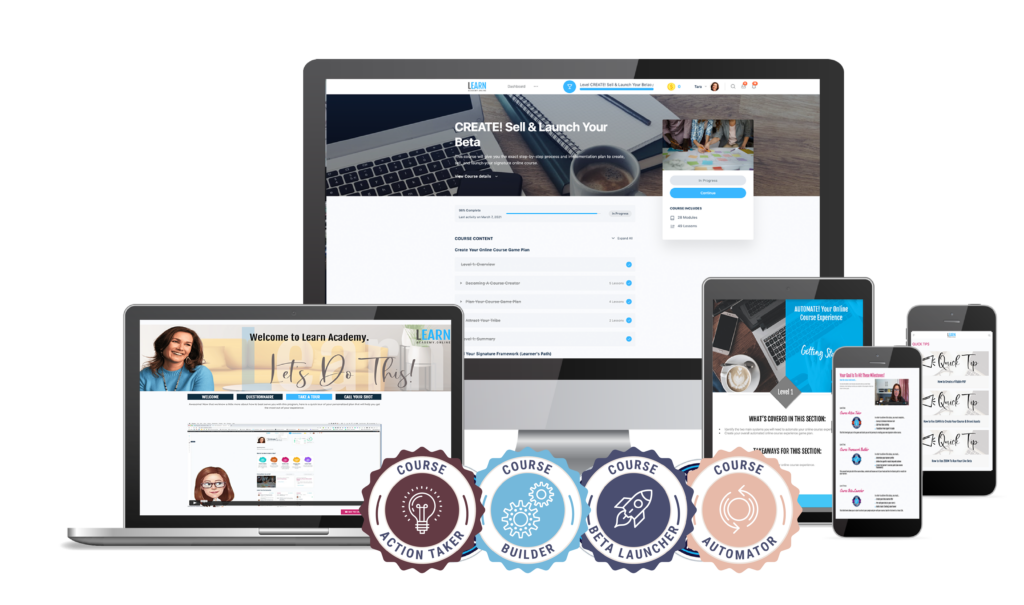Introduction
Trying to grow a business can feel overwhelming, especially if you’re constantly juggling sales, customer retention, and daily operations. But what if there was a way to grow your business without adding more hours to your already packed schedule?
This blog will explore three key shifts that can help you grow your business, improve customer retention, and free up time—all without compromising on quality or connection.
Shift 1: Become the Go-To Authority in Your Industry
One of the most effective ways to grow your business and reduce overwhelm is by positioning yourself as the go-to authority in your industry. When your target audience sees you as a trusted expert, they are more likely to choose you over the competition.
How Do You Become the Go-To Authority?
- Create an Authority Framework: An authority framework is your unique step-by-step process that guides your customers from problem to solution. This framework helps to clarify your expertise and builds trust. It’s the bridge between what your audience struggles with and the result they desire.
- Showcase Testimonials and Case Studies: Social proof is essential for building authority. Share success stories, testimonials, and case studies of clients who have benefited from your process. For help with creating your customer testimonials, check out https://www.testimagical.com.
- Consistent Content Creation: Regularly share your insights, tips, and strategies across different platforms (blog posts, podcasts, social media). This keeps your audience engaged and reinforces your expertise to grow your business. We love www.captivate.fm for podcasts.
Actionable Steps to Establish Authority:
- Identify Your Authority Framework: Write down the top three problems you solve for your clients and the steps you consistently take them through. This is the beginning of your signature process.
- Develop a Content Plan: Create a schedule to post valuable content that highlights your expertise—whether it’s a blog, YouTube video, or podcast episode.
- Leverage Testimonials: Reach out to past clients and ask for testimonials you can showcase on your website and social media.
Pro Tip: Implement your framework in your marketing materials. Clearly outline the steps you take customers through, building anticipation for results.
Shift 2: Design a Customer Journey That Drives Engagement
A successful business isn’t built on one-time sales—it’s built on consistent customer engagement. Your customers need a clear path from their first interaction to their final result. Creating an effective customer journey ensures they remain engaged, achieve their goals, and come back for more.
How Do You Build an Engaging Customer Journey?
- Map Out Your Customer’s Path: From the moment they discover your business to the point where they’ve achieved their desired result, each stage of the customer journey should be clear and seamless. This journey could include onboarding, milestone achievements, check-ins, and personalized interactions.
- Provide Quick Wins: People love seeing results quickly. Whether it’s through an onboarding call, a welcome package, or a simple “quick win” task, ensure your customers feel that they’re progressing early on.
- Keep Customers Engaged: Regular communication is key. Set up automated check-ins, provide resources, and send personalized messages to keep clients on track.
Actionable Steps to Build a Customer Journey:
- Define the Stages of Your Journey: Break down your client’s journey into clear steps. What happens after they sign up? What milestones do they need to achieve? Write these down and organize them into a logical flow.
- Implement Automation for Check-ins: Use tools like email marketing automation (Mailchimp, ActiveCampaign) to send regular follow-ups, ensuring clients stay engaged without adding to your workload.
- Deliver Quick Wins: Create a small task or achievement for new customers within their first week of working with you. This will help them feel successful and motivated to continue.
Pro Tip: Use feedback from past clients to refine your customer journey and ensure it’s a smooth, intuitive process.
Shift 3: Leverage Systems to Grow Your Business Without Overwhelm
Once you’ve established your authority and designed a seamless customer journey, it’s time to put the right systems in place. Automation and systems are essential for scaling your business without adding more work to your schedule.
What Systems Should You Focus On?
- Automated Onboarding: Set up an automated onboarding process that walks new clients through the initial steps of working with you. This can include welcome emails, instructional videos, or a project management system like Trello or Asana.
- CRM for Follow-Ups: Use a customer relationship management (CRM) tool to track your clients’ progress and automate follow-up tasks. This helps you stay organized without having to remember every detail.
- Content and Delivery Automation: Use platforms like Kajabi or Teachable to automate content delivery for courses or membership sites, ensuring customers receive their materials on time.
Actionable Steps to Implement Systems:
- Automate Your Onboarding: Create an automated email sequence that introduces new clients to your process, expectations, and next steps.
- Use a CRM: Implement a CRM like HubSpot or Pipedrive to manage your customer interactions and automate follow-up emails.
- Schedule Content Delivery: Use tools like Later, Hootsuite, or Buffer to schedule your social media and content marketing posts in advance, freeing up your time.
Pro Tip: Start small by automating just one process (like onboarding or follow-ups) and gradually add more automation as you grow comfortable.
Conclusion
By embracing these three key shifts—becoming the go-to authority, designing an engaging customer journey, and leveraging systems—you can grow your business without maxing out your schedule.
These strategies not only help you scale but also improve client retention and engagement, giving you more time to focus on what matters most.
Next Steps: What’s one process you can start automating today?
Take a moment to evaluate where you can begin implementing these shifts to grow your business.
Ready to Grow Your Business?
If you want help growing your business, consider joining Learn Academy Mentorship. It is the only mentorship experience that gives you the exact step-by-step path to success.
Want a faster path? Grab a date on my calendar for a VIP Strategy Session.







